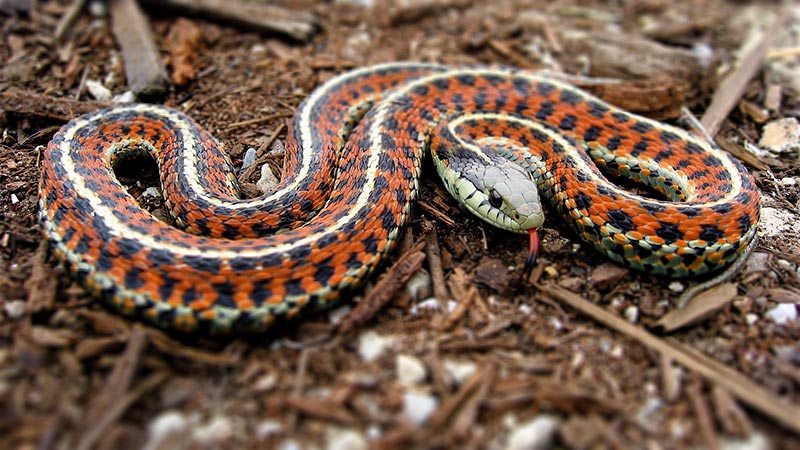
With over 3,000 species of snake, be careful to choose the right one for a pet.
Oh yikes! Some people are afraid of snakes, but did you know that snakes are actually more afraid of us? They prefer to live their lives slithering along, and to be left alone by humans.
Snakes belong to the family of carnivorous reptiles. In colder areas they usually breed in the spring, after completing a period of hibernation. In the tropics, mating can occur at any time of year. In most snakes, the mother lays eggs, while in some types of snakes, babies may develop inside of their mother.
Some snakes lay their eggs deep in the ground. Baby snakes are left alone to care for themselves. They have a range of body lengths from three to seventeen inches. They are a miniature version of their parents. If baby snakes are from a venomous species, then babies are born with an equally strong poison like the older of their kind. These infants will have significant growth in the beginning their lives. When they are older, growth with be much slower.
Like adults, their bodies are covered with overlapping scales. These comprise the dry, smooth outer casing which helps them conserve water. Their color varies depending on pigment cells, which are under their outer casing. As they grow, these small snakes will change their skin layer.
It may seem very strange, but snakes do not have eyelids! That means that even when they sleep, their eyes are open. They also do not recognize colors, but they can locate hot bodies in order to hunt. The sense of sight and the ability to detect vibrations are important for the survival of baby snakes. Although they don’t have external ear drums, they have small bones in their heads that conduct sound.
Snakes consume small animals such as lizards, mammals, eggs, fish, snails or various insects. They swallow their prey completely. This is possible, thanks to their flexible jaw, to swallow prey larger than their heads.
Another characteristics of snakes is they like to hibernate. This means they go into a deep sleep that lasts during the process of digestion. The length the baby snake goes through this period is short, but a larger snake will stay in hibernation much longer, sometimes for months! Baby snakes require frequent meals, while adult snakes can go a long time without eating.
These babies can be found everywhere – in parks, meadows, woodlands, mountains, grasslands, swamps, marshes, deserts and urban areas. Depending on what species they belong to, they can be arboreal, fossorial, aquatic or terrestrial. Some snakes even live in the ocean!
Animal Care Facts
A healthy snake should feel strong and muscular and be considerably active. Your snake should have an environment in which it is ready to live in when it is brought home. Ensure that you have a vivarium, a heat map that covers half the tank for warmth, and a light to easily view your snake. The last thing you want is for your snake to go missing! Make sure that all doors and screens are on securely to avoid a slithery snake on the loose.
Snakes mostly feed on pinky mice; with a baby snake needing a mouse every 5-7 days and an adult snake needing a mouse every 1-2 weeks. Your snake loves fresh water and the water kept in the snake’s tank should be changed often to make sure it stays fresh and cool. Give your snake somewhere to hide when it wants to be alone or sleep. We all need somewhere to retreat to!